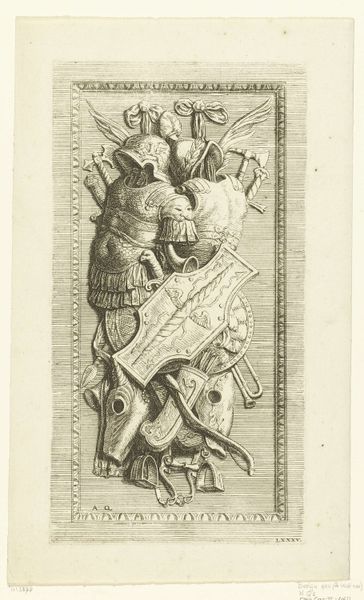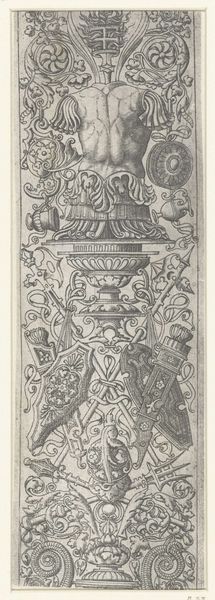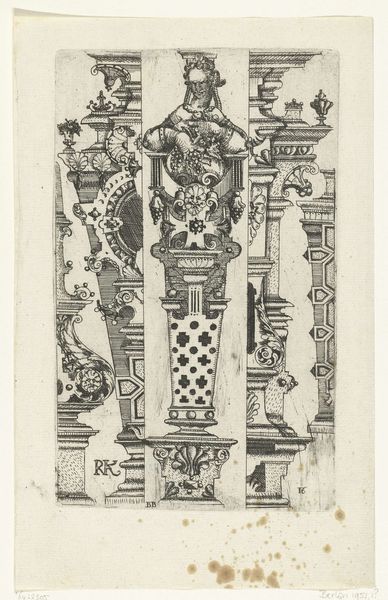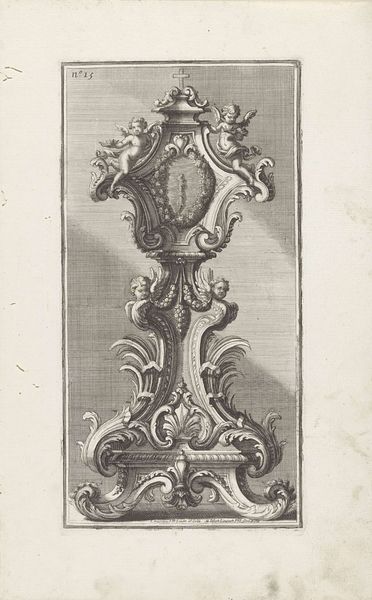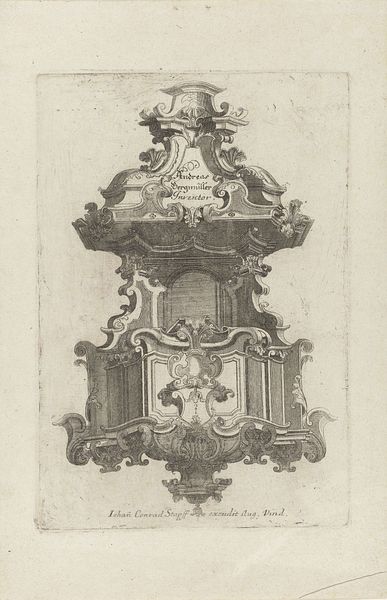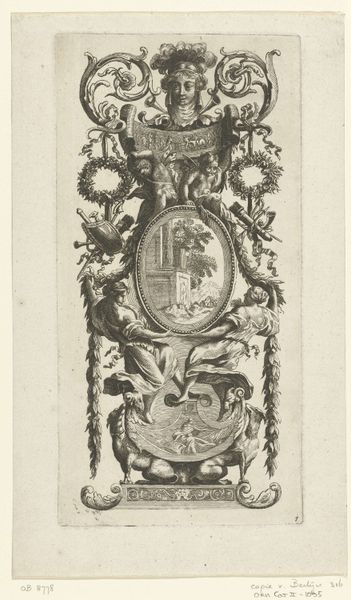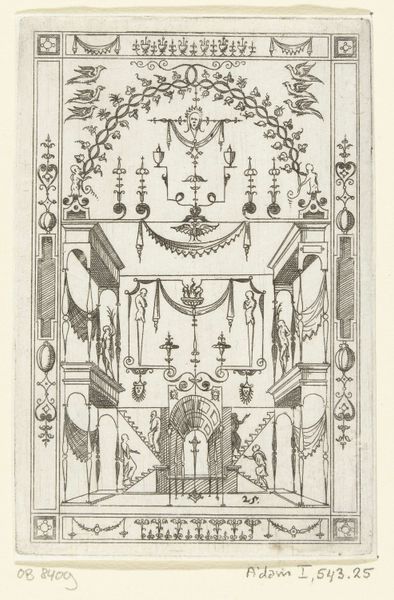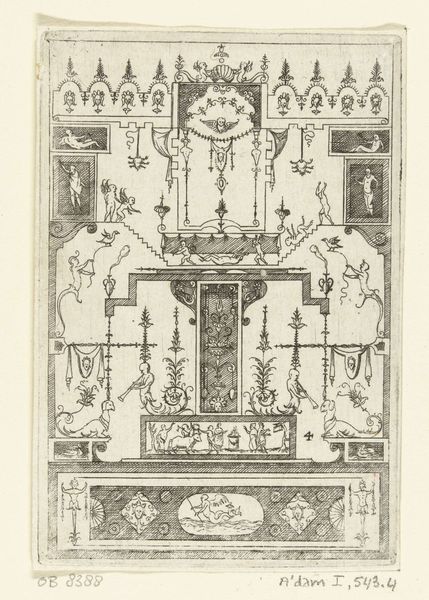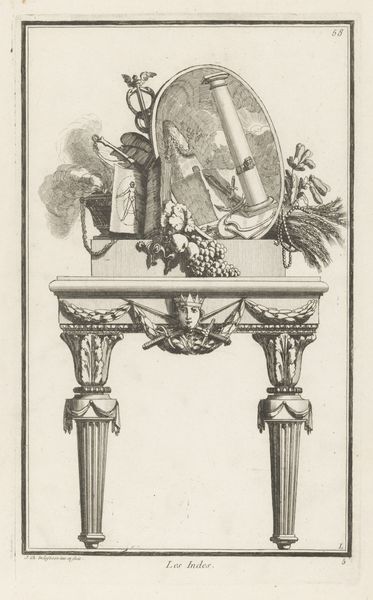
print, etching
#
allegory
#
pen drawing
# print
#
etching
#
northern-renaissance
Dimensions: height 335 mm, width 103 mm
Copyright: Rijks Museum: Open Domain
Curator: Before us, we have a 15th to 16th-century etching attributed to Daniel Hopfer, entitled "Vlakdecoratie met onderaan de Kruisiging". The print presents a decorative scheme with the Crucifixion depicted towards the bottom. Editor: The linear intensity is arresting. The artist creates almost a tapestry of ornament—a cascade of flowing line that carries your eye across its various compartments. There’s a stark contrast between the dense foliage and the figures. Curator: Indeed, Hopfer was one of the earliest known etchers, pioneering the use of iron plates to allow for more accessible production of prints. Consider the process: the labor invested in each line etched, the repetitive task of printing, making it available to a wider audience than unique works. Editor: Note the intricate arrangement, beginning with the harrowing depiction of the Crucifixion scene contained within architectural framework and flourishes that recall early Renaissance ornamentation. The layering creates a symbolic world of considerable density. Curator: And it extends beyond simple depiction, doesn't it? Each motif holds meaning—allegories intertwined with Christian symbolism. This piece exemplifies the intersection of artistic innovation with deeply ingrained cultural narratives of the period. Think of the economic structures that permitted Hopfer this work, what his commissions and reception say about the era. Editor: Observe how Hopfer composes such potentially disparate visual elements—figures, flora, architectural motifs—into an almost seamlessly woven design. It feels like more than mere decoration; it feels…totemic. Curator: Ultimately, viewing "Vlakdecoratie met onderaan de Kruisiging" offers a unique glimpse into not only artistic practices but also into the social conditions shaping European printmaking in this crucial historical period. Editor: It's a beautiful testament to how the most profound statements can be articulated through meticulous and repetitive labor. The act of reproduction becoming a testament to both suffering and art.
Comments
No comments
Be the first to comment and join the conversation on the ultimate creative platform.

